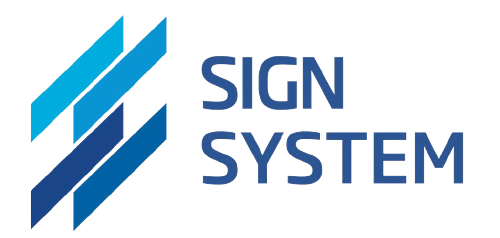Most Common Safety Sign Mistakes You Should Avoid
Safety signs are a crucial component of any responsible business’ health and safety policy since they have been shown to be a very effective way of drawing attention to workplace dangers and safe procedures in busy workplaces. However, proper application is crucial for them to be successful as a safety measure.
Too frequently, businesses make avoidable errors in the placement or selection of their safety signs, which prevent them from getting the most out of them. At best, this can cause a lack of understanding and confusion; at worst, it can increase workplace danger and increase the likelihood of accidents for employees.
Here are some of the most frequent errors businesses make when posting safety signs, in an effort to help your business avoid the harmful effects of improper sign use. Making an effort to prevent these mistakes can help to keep everyone on the job site informed and secure.
Putting signs in the wrong places
Simply not knowing where to post safety signs is one of the most frequent – and easily-committed – blunders to be made when investing in them. Although it may seem insignificant, where a sign is placed can have a huge impact on how successful it is.
Signs intended to convey important safety information frequently end up being placed too high up for workers to see without specifically looking for them; other times, the sign will be attached in a spot where it is easily blocked by nearby objects; or objects will be placed in front of the sign to block it from view.
Other common mistakes include placing the sign too far from the intended place, which prevents workers from associating it with the danger, or too close, which prevents onlookers from seeing the warning until they are already in danger. Insufficient lighting makes it doubtful that non-illuminated signs will offer any substantial advantages.
Simple: Businesses must ensure that safety indicators are always readily visible to the workers who need to view them in order to solve this issue.
Failing to keep signs well-maintained
Another problem that can seriously impair the accessibility of the information these signs are designed to convey is poor safety sign upkeep. A sign that is cracked, faded, worn, or corroded not only looks bad, but may also be challenging to read or interpret, therefore losing its value as a safety aid.
Similar to this, businesses must make sure that signs that are necessary on a permanent basis are attached firmly so they cannot be overturned. A sign that has been up for a while should make sure that the information on it is still accurate and that it is updated or taken down if conditions change. Outdated safety information can be seriously and dangerously misleading.
Remember, safety signs should be treated as a regular area of investment and improvement rather than as a one-time transaction to be handled and then forgotten about, just like all other aspects of health and safety.
Placing too many signs closely
Even workplaces with the strictest regulations will occasionally contain a number of preventable dangers in some industries. It is appropriate for firms to spend money on safety signs to inform employees of these risks, but they should be cautious about clustering too many indicators together.
For a number of reasons, it can be detrimental to place an abundance of safety signs close together. It may be difficult to guarantee that personnel are receiving the most pertinent information due to the overabundance of signage, which will likely dull the clear visual message that such signs are intended to deliver. People may not see warnings that are relevant to them because another message caught their attention.
The ideal strategy will be to use strategic sign placement, giving precedence to the most important warnings, and making an effort to spread the notices apart. A personalized safety board can be an excellent investment for your business because it offers a central spot to display extensive safety information without the need to plaster the entire workplace with pointless signage.
Vague messaging
Although safety signs are primarily a visual tool, many will need some language to express their point. It takes balance to get this messaging properly because too much or too little text might lead to conflicting issues.
Too much writing on a sign can be aesthetically confusing and lessen the effect of the message, especially for people who do not speak English as their first language or who may otherwise have difficulty seeing the text. On the other hand, a sign’s intent might be muddled by a lack of wording. For instance, if a sign warns of a “overhead hazard” or “trip hazard” without explaining what exactly this is, the worker won’t know what to expect or look for, making it difficult to take appropriate precautions.
An ideal safety sign would be straightforward and succinct, describing the danger clearly and outlining the steps that should be taken to prevent it. It would also include a picture that is suitable for communicating the message. Your company will be able to generate large and meaningful health and safety benefits by putting well-designed signage in the best locations and taking good care of them.
To browse a full range of safety signs for your workplace, check out what SignSystem has to offer.
